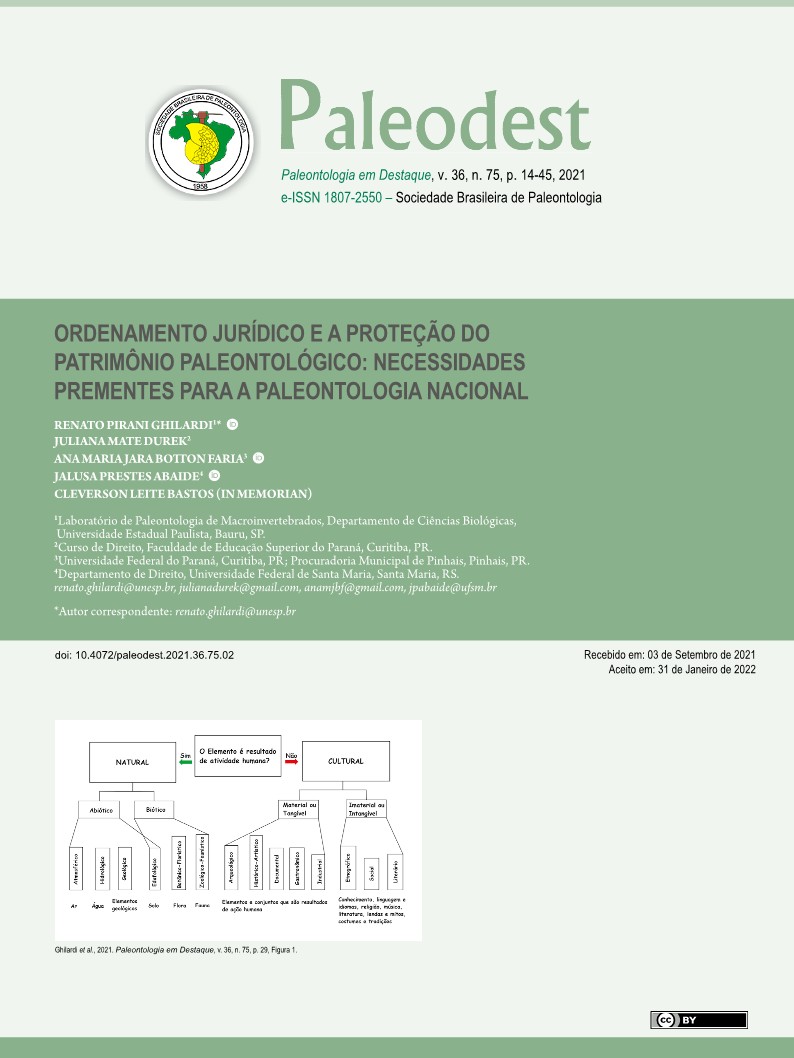ORDENAMENTO JURÍDICO E A PROTEÇÃO DO PATRIMÔNIO PALEONTOLÓGICO: NECESSIDADES PREMENTES PARA A PALEONTOLOGIA NACIONAL
Resumo
Legal Ordinance and the Protection of Paleontological Heritage: Pressing needs for National Paleontology. This study seeks to analyze the specific legislation referring to fossiliferous deposits in relation to their controversy of jurisdiction, in addition to reasoning about measures to preserve the paleontological heritage after the extraction of fossils from the ground. It is noticed that the rules limit the responsibility for protection and supervision of the competent body. The ANM has its responsibility until the moment of extraction and IPHAN only if the paleontological heritage is listed. The absence of an understanding of what is considered paleontological heritage, and of a specific law designating a competent body as responsible for the paleontological heritage, hinders protection and inspection. Finally, it is concluded that there is a need for greater discussion on the subject, both with the community, as well as in the academic and legal world, in addition to the lack of regulation on the profession of paleontologist and clearer legislation in relation to paleontological heritage.
Keywords: Fossil, Paleontological Heritage, Constitution, Brazilian legislation.
Resumo
O presente estudo busca analisar as legislações específicas referentes aos depósitos fossilíferos em relação a sua controvérsia da competência além
de arrazoar sobre as medidas de preservação do patrimônio paleontológico após extração dos fósseis do terreno. Percebe-se que as normas limitam
a responsabilidade de proteção e fiscalização do órgão competente. A ANM tem sua responsabilidade até o momento de extração e o IPHAN somente se o patrimônio paleontológico for tombado. A ausência do entendimento do que é considerado patrimônio paleontológico, e de uma lei específica designando um órgão competente como responsável pelo patrimônio paleontológico dificulta a proteção e fiscalização. Por fim, conclui-se que existe a necessidade de uma maior discussão sobre o tema, tanto com a comunidade, como no meio acadêmico e jurídico, além da carência de regulamentação sobre a profissão de paleontólogo e de uma legislação mais clara em relação ao patrimônio paleontológico.
Palavras-chave: Fóssil, Patrimônio Paleontológico, Constituição, Legislação Brasileira.

Downloads
Publicado
Edição
Seção
Licença
Copyright (c) 2022 Paleontologia em Destaque - Boletim da Sociedade Brasileira de Paleontologia

Este trabalho está licenciado sob uma licença Creative Commons Attribution 4.0 International License.


